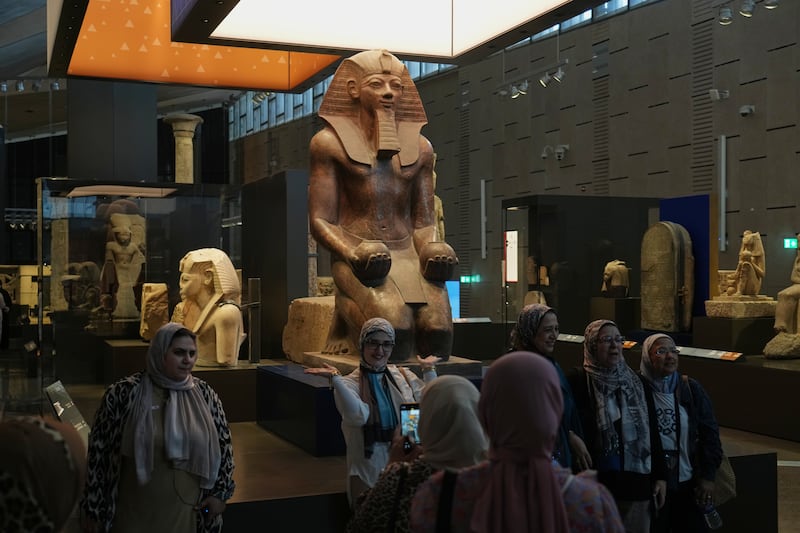It’s been over a century since the nearly-intact tomb of the boy King Tutankhamun was discovered by British archaeologist Howard Carter. Now, the wait to see contents from the famed Egyptian king’s tomb is official over.
More than 5,300 relics from the young king’s tomb, such as his gold mask, throne and chariots, will be showcased for the first time alongside 100,000 Egyptian artifacts at the long-awaited Grand Egyptian Museum — making it the world’s largest archaeological museum, per Forbes.
Following a partial opening in late 2024, the Grand Egyptian Museum completely opened on Saturday after years of setbacks. Located near the pyramids of Giza, just outside of Cairo, the museum’s elaborate opening hosted delegates from more than 70 countries, including royal families, presidents and prime ministers.
The ambitious project, which was first proposed in 1992, took nearly as long as the Great Pyramid to construct, the BBC estimates.
It took more than two decades to complete the museum. Its construction was delayed several years by the COVID-19 pandemic, the Arab Spring, financial crisis and regional wars.
“We’ve all dreamed of this project and whether it would really come true,” Prime Minister Mostafa Madbouly said during a press conference, per Reuters. He then called the museum a “gift from Egypt to the whole world from a country whose history goes back more than 7,000 years.”
With a price tag of roughly $1.2 billion, the museum stretches across 500,000 square meters, equivalent to 70 soccer fields. About 24,000 square meters of the museum houses permanent exhibition space.
Tourism in Egypt, which suffered during regional crisis, is expected to enjoy a boost, largely in thanks to the museum, which experts anticipate will help to attract 18 million visitors to Egypt in the next year, and hope will bring 30 million visitors to the country annually by 2032, according to The Associated Press.

“We hope the Grand Egyptian Museum will usher in a new golden age of Egyptology and cultural tourism,” said Ahmed Seddik, a guide and aspiring Egyptologist by the pyramids on the Giza Plateau, per the BBC.
Perhaps the museum’s biggest draw will be its massive collection related to King Tutankhamun, the boy Pharaoh who ruled Egypt from about 1332 to 1323 B.C., per AP. His tomb was discovered almost completely intact in 1922 by British archaeologist Howard Carter.
The previous Egyptian Museum did not have enough space to showcase all of the over 5,000 artifacts found within the tomb — including the young king’s three funeral beds, his gold burial mask, six chariots, golden throne, armor and more.
“I’ve been organizing so many tours to the museum even though it was partially open,” Seddik said. “Now it will be at the pinnacle of its glory. When the Tutankhamun collection opens, then you can imagine the whole world will come back, because this is an iconic Pharaoh, the most famous king of all antiquity.”
In addition to the Tutankhamun exhibit, the museum will also showcase the 4,500-year-old, 42-meter funerary boat of Khufu, one of the oldest and best-conserved vessels from antiquity. An 11-meter tall, 3,200-year-old statue of King Ramses II, will also be on display, per ABC news.
There are 12 main galleries in the museum, featuring artifacts dating from pre-Egyptian history to the the Greco-Roman era.
“The museum’s design was created to work in dialogue with the scale and mathematical precision of the pyramids,” said Roisin Heneghan, co-founder of Heneghan Peng Architects, the Irish firm behind the design, per ABC News.
“This is the first time in history that many of these artifacts will be shown together, so it was important that the design worked to strengthen this connection to place and honor the rich history of ancient Egypt.”


